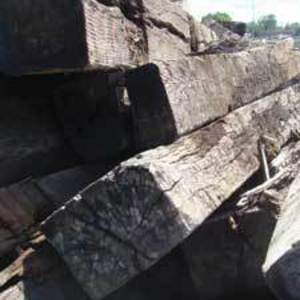EPA adds more treated railroad ties to nonwaste fuels list




November 3, 2016
BY Anna Simet
The U.S. EPA has proposed an amendment that will add additional treated railroad ties to its list of categorical nonwaste fuels under the Non-Hazardous Secondary Materials Rule.
Under the Resource Conservation and Recovery Act, NHSM rulemakings identify which nonhazardous secondary materials are or aren’t solid wastes when burned in combustion units. If material is a solid waste under RCRA, a combustion unit burning it is required to meet the Clean Air Act Section 129 emission standards for solid waste incineration units. If the material is not a solid waste, combustion units are required to meet the CAA Section 112 emission standards for commercial, industrial, and institutional boilers, much less stringent standards.
Advertisement
The NHSM went into effect in March 2011. It has been amended twice since then, the most recent of which added three materials—construction and demolition debris, paper recycling residuals and creosote-treated railroad ties—to the nonwaste fuels list. The latest proposal would add railroad ties processed with creosote-borate, copper naphthenate and copper naphthenate-borate, under certain conditions depending on the chemical treatment.
According to the EPA proposal, creosote-borate railroad ties, as well as mixtures of creosote, copper naphthenate and copper naphthenate-borate railroad ties, would qualify as a nonwaste fuel when processed and combusted in units designed to burn both biomass and fuel oil, but must be part of normal operations and not solely as part of start-up or shut-down operations.
Also included, with the same stipulations, would be units at major source pulp and paper mills or power producers subject to 40 CFR part 63, subpart DDDDD, that combust these treated railroad ties and were designed to burn biomass and fuel oil, but were modified in order to use natural gas instead of fuel oil. Railroad ties may continue to be combusted as product fuel in units that have been modified to use natural gas only if the following conditions are met, which are intended to ensure that these materials are not being discarded:
Advertisement
Must be burned in existing (i.e., commenced construction prior to April 14, 2014) stoker, bubbling bed, fluidized bed, or hybrid suspension grate boilers; can comprise no more than 40 percent of the fuel that is used on an annual heat input basis; copper naphthenate and copper naphthenate-borate railroad ties are combusted in units designed to burn biomass, or biomass and fuel oil.
Comments on the proposal are due by Jan. 3.
Upcoming Events





